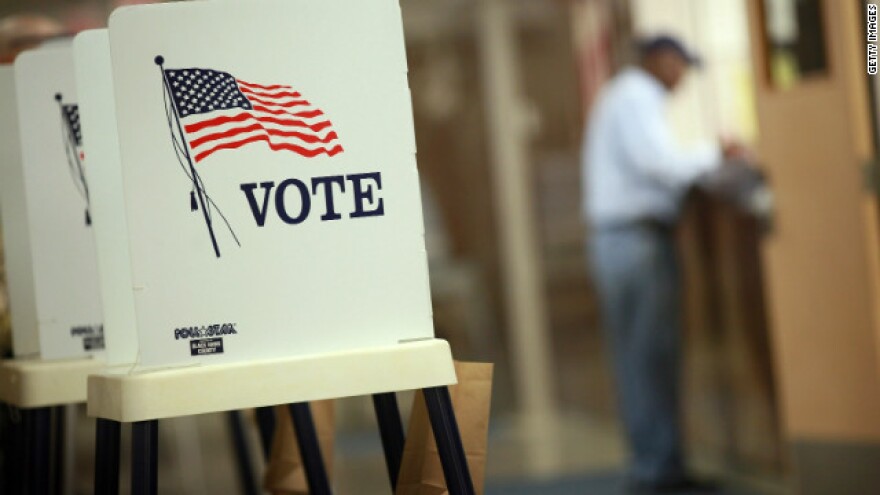For the third time, conservative Republicans in the House are proposing legislation to require voters to show photo ID, despite very little documented voter fraud in Ohio.
Twice before a bill to require voters show photo ID when casting ballots in person has been tried, but those proposals have never gotten far – possibly because of opposition from Republican Secretary of State Jon Husted. In an interview last September, Husted said voters need to have some kind of ID, but doesn’t want to limit it to photo ID.
“Photo ID is good, but we should have some other options in the circumstances that people don’t have a photo ID,” Husted said. "And it’s always important to remember, but one out of three voters votes by mail. So it’s really hard to check a photo ID via mail.”
But Husted has produced some stats that voter photo ID backers say show that fraud is on the rise. Two years ago Husted said 625 so-called voter irregularities were found in the 2012 election, with 135 turned over prosecutors. And he told a Congressional committee in February that 436 non-US citizens had registered to vote and 44 of them cast a ballot.
Chris Long with the Ohio Christian Alliance says that’s evidence that there’s what he calls a growing trend of voter fraud in Ohio.
“With 28 days of open voting still on the books here in Ohio, there is too much time for those who want to take advantage of our elections system to do so,” Long said.
Members of the Ohio Christian Alliance gathered at the Statehouse to lobby lawmakers to support the latest version of the voter photo ID bill, this time sponsored by Republican Rep. Andrew Brenner of Powell.
Brenner said if it passes, every Ohioan voting in person must show a driver’s license, a state ID card, a US passport or a US military ID card as proof of identity. Brenner says eight states have strict voter photo ID laws, and it’s time Ohio joined them.
"In Ohio, we’ve got a very good voter system where we’re able to verify at least the voters somewhat in Ohio. But we don’t know every single one of them, and we cannot verify whether or not they are all residents of the state of Ohio,” said Brenner. "Having a photo ID will be a way to do that.”
But the stats that voter photo ID backers use to bolster their argument don’t hold water for the American Civil Liberties Union of Ohio.
Gary Daniels says do the math, and those numbers cited from the Secretary of State from 2012 show voter fraud at .002 percent of 5.6 million votes cast. “You have a better shot of winning the lottery here in Ohio,” said Daniels.
"Those numbers are greater than the people who allegedly engage in voter fraud, because all we have essentially, except for a couple of little numbers here or there, are allegations of voter fraud.”
Daniels says a million Ohioans may not have photo ID and could be disenfranchised by a voter photo ID law.
Peg Rosenfield with the League of Women Voters of Ohio agrees, and says the kinds of voter fraud these backers are talking about wouldn’t be prevented by requiring photo ID.
"A photo ID will only prevent someone from impersonating another voter,” said Rosenfield. "And that’s not the case in any of the things, the concerns they raise.”
Rosenfield and Daniels back online voter registration as a solution – because a photo ID doesn’t prove someone is a qualified elector, but online registration can.
But Brenner says he has serious concerns about that.
“How would online voting registration stop impersonation? I mean, right now we’ve got computer hackers getting into the President Obama’s personal e-mails,” said Brenner. "Who’s to say I couldn’t fill out tons of fake voter registrations in the state of Ohio online?”
Opponents of voter photo ID continue to maintain that it’s a ploy to suppress voting among low-income people, college students and other groups that traditionally have cast ballots for Democrats, and that leaving voting laws alone will stop the confusion that keeps some voters from showing up at the polls.

